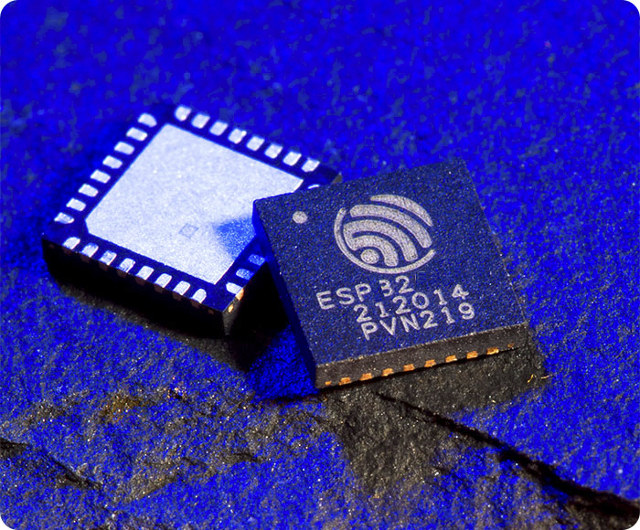Espressif teased us about a successor to ESP8266 a few months ago that would support both WiFi and Bluetooth Low Energy, and John Lee, working for Espressif Systems, has now sent a letter to ESP8266 developers announcing the new wireless SoC with two Tensilica L108 cores and called ESP32.

Espressif ESP32 key improvements over ESP8266:
- Faster WiFi – Wifi has been upgraded to support HT40 speed (144.4 Mbps) and has a new RF architecture to simplify the application schematics
- Bluetooth Low Energy and Classic
- Dual core processor – 2x Tensilica L108 processors clocked at up to 160 MHz
- Low Power Mode Improvements – ADC conversions, level thresholds, etc.. can now be performed in deep sleep
- Peripherals – Capacitive touch, ADCs, DACs, I2C. UART, SPI, SDIO, I2S, RMII, PMW, etc… but no USB.
- More RAM – ~400 KB on-chip RAM
- Security – Hardware accelerated AES and SSL, and more undisclosed improvements.
- Simplified APIs – Not many details provided here, except WiFi APIs will be simplified, yet keep good flexibility and control.
One of my contact also informed me that there were two PGA (Programmable Gain Amplifier) blocks connected to two ADC blocks in the chip, which could be used for power metering with one PGA/ADC block used for voltage measurement, and one PGA/ADC block for current measurement. So ESP32 would offer a one chip solution for smart sockets. [Update: A few more information gathered from twitter: Close to 40 GPIOs, IPV4 and IPv6 support, [email protected] is where you want to write to apply for a board, QFN package, not much more expensive than ESP8266, …]
The letter promises that beta testing will start soon with about 200 applications boards to be sent out, and a bounty program will be launched for people who can successfully compromise ESP32 security. The CEO also made a call to engineers who are interested in working with the company in Shanghai.

Jean-Luc started CNX Software in 2010 as a part-time endeavor, before quitting his job as a software engineering manager, and starting to write daily news, and reviews full time later in 2011.
Support CNX Software! Donate via cryptocurrencies, become a Patron on Patreon, or purchase goods on Amazon or Aliexpress




